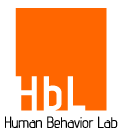How To Navigate Career Gaps On Your Resume During A Job Change
Navigating employment gaps on a resume can feel like traversing a minefield, especially for career changers or those seeking to pivot later in their professional lives. However, the narrative you craft can turn what might look like a red flag to an employer or hiring manager into one of your most vital selling points.
For some people, it’s inevitable to take a career gap. Whether you stayed at home to raise a family, care for a loved one or needed a moment to address your mental health, these experiences shape who you are and what you can accomplish. All it takes is a little tweaking to craft a compelling story.
Why Career Gaps Are No Longer Seen As Red Flags
Compassionate and forward-thinking organizations now acknowledge the multifaceted nature of employee experience. They understand that career gaps and redirects often lead to diverse skill sets, fresh perspectives and a strong work ethic.
Employers are looking for stories that illustrate adaptability, resilience and a willingness to learn and grow—traits that are often hallmarks of individuals who have navigated career gaps. In a market plagued by talent shortages, job seekers with varied backgrounds are increasingly seen as valuable assets rather than liabilities.
6 Good Reasons For An Employment Gap
- Health or Wellness: Taking time off to focus on your own or a family member’s health is universally understood and respected.
- Personal Endeavors: Pursuing an individual project or a passion can reflect well on your entrepreneurial spirit.
- Education or Training: Furthering your education or gaining new skills shows your commitment to self-improvement.
- Relocation: Moving to a new city or country can require time to adjust and find new work opportunities.
- Economic Downturns: The market can be unpredictable, and downsizing or company closures can lead to unforeseen gaps.
- Reassessing Career Goals: Sometimes, taking a step back can clarify the next best move for your career.
Add A Career Break Placeholder On Your Resume
A functional resume that focuses on skills and experiences rather than a chronological work history can effectively de-emphasize employment gaps. Lead with your strongest and most relevant skills, then list jobs and educational experiences under each skill category. This approach also steers the narrative-planned career break towards the activities and skills you’ve built during this time.
How To Explain A Career Gap In A Cover Letter
The key to addressing career gaps in your cover letter is to focus on the narrative of work history gaps and how your experiences during the gap contribute to your suitability for the role. If you’ve engaged in freelance work, internships or volunteer positions during your career gap, highlight these areas.
3 Ways to Explain Employment Gaps in Cover Letters
- Describe Your Activities: In a few sentences, succinctly describe what you did during your gap, focusing on developmental activities.
- Highlight Transferable Skills: Discuss the skills you gained and how they could apply to your chosen role.
- Speak to Your Readiness for Work: Conclude with a statement that ties your experiences to your enthusiasm and readiness to return to the workforce.
Consider Upskilling
During career gaps, invest time in upskilling. Online courses, certifications and industry-related learning can keep you competitive and pave the way to new opportunities.
Top upskilling platforms:
- Coursera
- edX
- Duolingo
- FutureLearn
- Skillshare
- upGrad
By accommodating career gaps into your professional story for job interviews, you’re creating a stronger, more authentic narrative that highlights your unique skills and experiences. Your path is rich with experiences, each deserving to be part of the story you share with potential employers.
We specialize in High-performance Human Behavior training
Working on the humans that grow your business | High-performance Human Behavior training | I teach corporations & employees how to hack into humans using Behavior & Persuasion. I work with Pharma | Finances| Banking |Insurance| Sales| AI – Language & Behavior Economics
